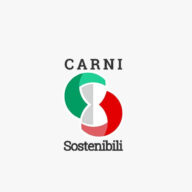
In summer, let’s get some raw meat
Summer is approaching and, with beautiful and warm sunny days, we cannot miss fresh salads on our table. But also meat, especially raw, such as tartare and carpaccio, is well served as an inevitable ingredient for a fresh, nutritious and tasty dish. How can we consume it safely?
Raw or slightly cooked meat can contain microorganisms responsible for food infections, which can also cause serious gastrointestinal disorders. Pork and chicken meat, for example, are the most problematic from a hygienic point of view, so they should never be eaten raw or not properly cooked. However, chicken can be eaten cold, once cooked, cut into strips in salads, while the pork is great for beautiful outdoor grilling. There is no problem for beef instead, always with the necessary cautions.
Operators, those who slaughter and prepare meat, should carefully follow all HACCP procedures and work on sanitized surfaces. Respect for basic health and hygiene standards, for correct procedures, and for the whole cold chain are key points for safe raw meat consumption. Also at home it is important to remember to keep raw food away from cooked food, including tableware and cutlery.
It is then imperative that the meat is of the best quality: so, it is necessary to choose the very fine bovine meat, a bright red colour, soft and lean, listening to the advice of your trusted butcher. To be more careful, you can remove all the outside part of the meat, which is the one that could have come into contact with any contamination. Usually the best cuts that are suitable for this purpose are the thin pieces of the thigh, with meat matured over 20 to 30 days, so as to ensure a dry meat, with its own flavour and fragrance, even without seasoning.
The benefits from the nutritional point of view are very high. Consuming raw meat in fact preserves all nutrients, which would be otherwise partly lost, especially with too aggressive and prolonged cooking. So all the water that the meat contains is preserved, which is important especially during summer, when it is recommended to drink a lot, making it a fresh and moisturized food.
Even the minerals of which the meat is naturally rich, such as iron, magnesium, zinc, selenium and calcium, which would be in part lost in cooking through the dispersion of liquids, in raw meat remain completely intact. The same applies to vitamins, which are the most unstable nutrients, the first ones that are denatured and lost: in raw meat it is possible to get all the vitamins, especially those of the B group, including the important B12.
It is true that cooking makes meat more digestible, but also the preparations to which raw meat is subjected to transform it into tartare or carpaccio have the same purpose. Carpaccio slices are very thin and light and the seasoning with lemon juice helps to marinate the meat, making it more digestible, “disinfecting” it and boosting the absorption of iron to the highest levels. To prepare the tartare, the meat is beaten using a sharp knife making it very thin, so that it feels like it is melted in the mouth, thus facilitating the digestion in the stomach.
It is of course better to eat freshly prepared meat, but it can also be stored in the fridge for a day at most. Among the most popular recipes, we find the famous “Albese raw beef” and “Alla francese tartare“, which are very easy to try at home for tasty and elegant cold dishes to be served on the upcoming summer evenings.
Susanna Bramante
Susanna Bramante is an agronomist and scientific writer, author and co-author of 11 scientific publications and numerous articles on human nutrition and its impact on health and environment. In 2010 she received the title of Doctor Europaeus and PhD in Animal Production, Health and Food Hygiene in countries with a Mediterranean climate.





